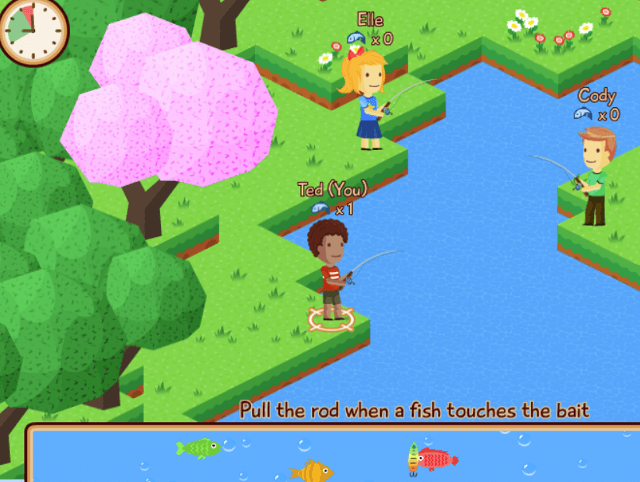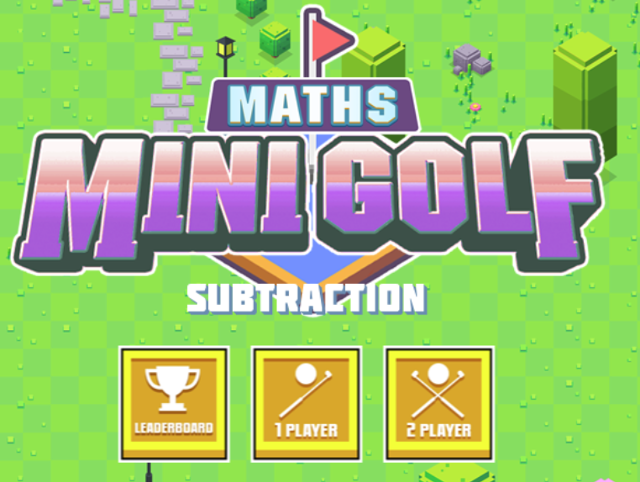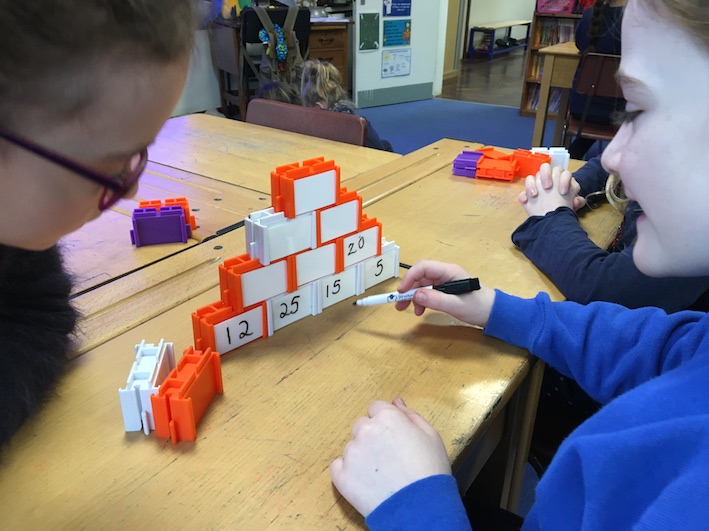Mathsframe: A teacher's guide
A teacher's guide to 'Mathsframe': Interactive games, worksheets and progress tracking tools that help students build critical thinking skills.


A teacher's guide to 'Mathsframe': Interactive games, worksheets and progress tracking tools that help students build critical thinking skills.
Mathsframe is a browser-based collection of interactive maths games that helps children connect number facts, categorise patterns, and explain their mental-calculation strategies out loud. Created by a primary teacher who wanted something more engaging than static worksheets, the platform now hosts 200-plus short activities built in Unity3D. Each one can run smoothly in a modern web browser or via the free iOS and Android app, so there's nothing to install beyond a simple log-in. In 2025, digital maths tools like Mathsframe continue to play an important role in supporting fluency and engagement across primary classrooms.
The games feel game-y: bright colours, quick timers, a few playful sound effects, yet they map tightly onto the UK National Curriculum. A Year 3 pupil drilling their 3× table meets the same conceptual model again when practising division in Year 4, which nudges them to connect old and new knowledge without even noticing. Most levels last two to three minutes, perfect for a starter task, homework link, or a fast-finishers station.
Pricing remains refreshingly straightforward: every core game is free. A low-cost annual licence unlocks progress tracking, extra characters, and a growing bank of printable resources, but the basic mental-maths drills never sit behind a paywall. That matters if you're a parent looking for no-risk practice or a teacher hunting for something to drop into tomorrow's lesson.
Try dropping a two-minute Mathsframe game into your next lesson starter and watch even the reluctant mathematicians lean forward.
The game consists of two parts: 1) A set of pre-designed levels which teach basic concepts such as addition, subtraction, multiplication and division; 2) An online leaderboard where players compete against each other to achieve high scores. Each level has multiple questions which must be answered correctly before progressing onto the next one. If a player answers incorrectly they receive negative points which reduce their score.
Players may also earn bonus points if they answer all the questions within a time limit or reach certain milestones during play. Once a question is completed successfully, its icon appears at the top right hand corner of the screen. This allows users to check how many correct answers were given without having to scroll through every single question.

As the platform has been developed by a teacher in the UK, you could expect most of the maths national curriculum to be covered. This includes:
As well as developing an understanding of different types of calculations and advancing multiplication knowledge, children can also assess their progress over time. Your pupils' ability can be assessed with maths questions that check for their understanding.
MathFrame is an interactive maths game that helps children learn mathematical concepts such as addition, subtraction, multiplication, division, fractions, decimals, percentages, ratios, geometry, measurement, time, money, algebra, probability, statistics, and more. The game includes over 100 puzzles, each with multiple levels of difficulty.
Product Features:

Mathsframe is an innovative platform that offers a wide range of interactive maths games to engage and challenge students. With a variety of games available, ranging in difficulty level and covering topics such as times tables questions, matching games, and logic games, students are able to practice and apply critical thinking and recognition skills.
Playing games is an effective way to keep students engaged and motivated while also developing their mathematical fluency. Mathsframe games are designed to help students progress over time, building on their existing knowledge and skills as they advance through the different levels.
Mathsframe games provide resources for teachers that allow them to customise activities to meet the needs of individual learners. Teachers can assign different games and difficulty levels, track student progress, and identify areas for improvement.
In particular, Mathsframe multiplication games provide a fun and engaging way for students to practice their times tables skills. The games encourage students to develop quick recall and fluency, building a solid foundation for more complex mathematical concepts.
Overall, Mathsframe games provide a valuable resource for teachers looking to make maths learning more fun and engaging for their students. By providing interactive games that develop critical thinking and recognition skills, Mathsframe is a powerful tool for promoting mathematical fluency and confidence in students.
Children often struggle with understanding abstract concepts such as number. Many of our member schools have been using the block building methodology to make number concepts visible and tangible. The blocks are about the size of Duplo Lego bricks and can be written on using miniature whiteboards.
Our member schools have used this process to make number work easier to grasp. The colours can be used to highlight patterns and make numerical concepts 'real'. Interactive games using technology are engaging but we've become increasingly conscious of the amount of time children spend in front of screens. This methodology makes learning social as well as engaging. The blocks can be used to create different shapes that depict different number concepts. You can find out more on our webpage.

Gamifying Mathsframe isn't about piling on novelty for its own sake; it's about slipping solid number work into a format children already recognise from their favourite apps. A two-minute high-score challenge can coax even the most hesitant learner to try one more multiplication, while the built-in timers and levelling system give you instant "next steps" without extra marking. Because every activity lives inside a standard browser, or the free Android/iOS app, you can launch a game as a whole-class starter, set it for homework, or leave it running on a tablet station for fast-finishers.
Below are ten quick ideas that make the most of Mathsframe's existing games and settings. Each one takes less than five minutes to set up, yet adds a fresh layer of competition, collaboration or real-world context that keeps attention high and repetition painless.
These studies and papers provide valuable insights into gamification, digital maths learning, and the effectiveness of interactive approaches in primary mathematics education.
1. The impact of gamification on learning and instruction by J. Hamari, J. Koivisto, H. Sarsa (2014)
This meta-analysis reviews existing research on gamification in educational contexts, finding that game elements such as points, badges, and leaderboards can enhance motivation and engagement, though effects vary depending on implementation and context.
2. Digital games in education: A meta-analysis by C. Lamb, L. Annetta, D. Vallett (2020)
This comprehensive review examines the effects of educational digital games on student learning outcomes, finding moderate positive effects particularly in mathematics and science subjects when games are aligned with learning objectives.
3. Mathematics anxiety and digital learning environments by K. Higgins, J. Huscroft-D'Angelo (2013)
This study explores how digital learning environments can help reduce maths anxiety in primary students, finding that game-based approaches provide a low-stakes environment where children feel more comfortable making mistakes and practising skills.
4. Developing number sense through mathematical games by P. Ramani, R. Siegler (2011)
Ramani and Siegler's research demonstrates that numerical board games and digital games can significantly improve children's number sense, numerical estimation, and mathematical reasoning skills, particularly in early primary years.
5. Fluency practice with digital tools: A systematic review by M. Young, S. Slotta, A. Cutter (2018)
This systematic review examines the effectiveness of digital tools for developing mathematical fluency, finding that short, frequent practice sessions with immediate feedback, similar to those offered by platforms like Mathsframe, are particularly effective for building automaticity in basic facts.
Mathsframe is a browser-based collection of interactive maths games that helps children connect number facts, categorise patterns, and explain their mental-calculation strategies out loud. Created by a primary teacher who wanted something more engaging than static worksheets, the platform now hosts 200-plus short activities built in Unity3D. Each one can run smoothly in a modern web browser or via the free iOS and Android app, so there's nothing to install beyond a simple log-in. In 2025, digital maths tools like Mathsframe continue to play an important role in supporting fluency and engagement across primary classrooms.
The games feel game-y: bright colours, quick timers, a few playful sound effects, yet they map tightly onto the UK National Curriculum. A Year 3 pupil drilling their 3× table meets the same conceptual model again when practising division in Year 4, which nudges them to connect old and new knowledge without even noticing. Most levels last two to three minutes, perfect for a starter task, homework link, or a fast-finishers station.
Pricing remains refreshingly straightforward: every core game is free. A low-cost annual licence unlocks progress tracking, extra characters, and a growing bank of printable resources, but the basic mental-maths drills never sit behind a paywall. That matters if you're a parent looking for no-risk practice or a teacher hunting for something to drop into tomorrow's lesson.
Try dropping a two-minute Mathsframe game into your next lesson starter and watch even the reluctant mathematicians lean forward.
The game consists of two parts: 1) A set of pre-designed levels which teach basic concepts such as addition, subtraction, multiplication and division; 2) An online leaderboard where players compete against each other to achieve high scores. Each level has multiple questions which must be answered correctly before progressing onto the next one. If a player answers incorrectly they receive negative points which reduce their score.
Players may also earn bonus points if they answer all the questions within a time limit or reach certain milestones during play. Once a question is completed successfully, its icon appears at the top right hand corner of the screen. This allows users to check how many correct answers were given without having to scroll through every single question.

As the platform has been developed by a teacher in the UK, you could expect most of the maths national curriculum to be covered. This includes:
As well as developing an understanding of different types of calculations and advancing multiplication knowledge, children can also assess their progress over time. Your pupils' ability can be assessed with maths questions that check for their understanding.
MathFrame is an interactive maths game that helps children learn mathematical concepts such as addition, subtraction, multiplication, division, fractions, decimals, percentages, ratios, geometry, measurement, time, money, algebra, probability, statistics, and more. The game includes over 100 puzzles, each with multiple levels of difficulty.
Product Features:

Mathsframe is an innovative platform that offers a wide range of interactive maths games to engage and challenge students. With a variety of games available, ranging in difficulty level and covering topics such as times tables questions, matching games, and logic games, students are able to practice and apply critical thinking and recognition skills.
Playing games is an effective way to keep students engaged and motivated while also developing their mathematical fluency. Mathsframe games are designed to help students progress over time, building on their existing knowledge and skills as they advance through the different levels.
Mathsframe games provide resources for teachers that allow them to customise activities to meet the needs of individual learners. Teachers can assign different games and difficulty levels, track student progress, and identify areas for improvement.
In particular, Mathsframe multiplication games provide a fun and engaging way for students to practice their times tables skills. The games encourage students to develop quick recall and fluency, building a solid foundation for more complex mathematical concepts.
Overall, Mathsframe games provide a valuable resource for teachers looking to make maths learning more fun and engaging for their students. By providing interactive games that develop critical thinking and recognition skills, Mathsframe is a powerful tool for promoting mathematical fluency and confidence in students.
Children often struggle with understanding abstract concepts such as number. Many of our member schools have been using the block building methodology to make number concepts visible and tangible. The blocks are about the size of Duplo Lego bricks and can be written on using miniature whiteboards.
Our member schools have used this process to make number work easier to grasp. The colours can be used to highlight patterns and make numerical concepts 'real'. Interactive games using technology are engaging but we've become increasingly conscious of the amount of time children spend in front of screens. This methodology makes learning social as well as engaging. The blocks can be used to create different shapes that depict different number concepts. You can find out more on our webpage.

Gamifying Mathsframe isn't about piling on novelty for its own sake; it's about slipping solid number work into a format children already recognise from their favourite apps. A two-minute high-score challenge can coax even the most hesitant learner to try one more multiplication, while the built-in timers and levelling system give you instant "next steps" without extra marking. Because every activity lives inside a standard browser, or the free Android/iOS app, you can launch a game as a whole-class starter, set it for homework, or leave it running on a tablet station for fast-finishers.
Below are ten quick ideas that make the most of Mathsframe's existing games and settings. Each one takes less than five minutes to set up, yet adds a fresh layer of competition, collaboration or real-world context that keeps attention high and repetition painless.
These studies and papers provide valuable insights into gamification, digital maths learning, and the effectiveness of interactive approaches in primary mathematics education.
1. The impact of gamification on learning and instruction by J. Hamari, J. Koivisto, H. Sarsa (2014)
This meta-analysis reviews existing research on gamification in educational contexts, finding that game elements such as points, badges, and leaderboards can enhance motivation and engagement, though effects vary depending on implementation and context.
2. Digital games in education: A meta-analysis by C. Lamb, L. Annetta, D. Vallett (2020)
This comprehensive review examines the effects of educational digital games on student learning outcomes, finding moderate positive effects particularly in mathematics and science subjects when games are aligned with learning objectives.
3. Mathematics anxiety and digital learning environments by K. Higgins, J. Huscroft-D'Angelo (2013)
This study explores how digital learning environments can help reduce maths anxiety in primary students, finding that game-based approaches provide a low-stakes environment where children feel more comfortable making mistakes and practising skills.
4. Developing number sense through mathematical games by P. Ramani, R. Siegler (2011)
Ramani and Siegler's research demonstrates that numerical board games and digital games can significantly improve children's number sense, numerical estimation, and mathematical reasoning skills, particularly in early primary years.
5. Fluency practice with digital tools: A systematic review by M. Young, S. Slotta, A. Cutter (2018)
This systematic review examines the effectiveness of digital tools for developing mathematical fluency, finding that short, frequent practice sessions with immediate feedback, similar to those offered by platforms like Mathsframe, are particularly effective for building automaticity in basic facts.